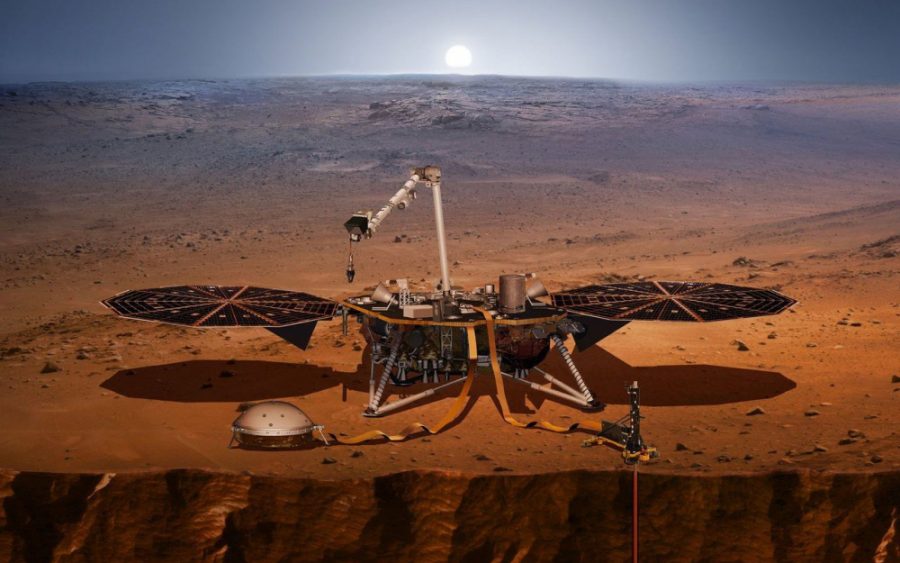NASA’s InSight Successfully Lands on Mars
On Nov. 26, NASA completed its eighth landing of a spacecraft on the surface of Mars. The successful landing of Insight, the new Mars lander, is a landing that consists of many firsts. It is the first successful Mars mission since the Curiosity was launched in 2012. It was also the first liftoff of an interplanetary mission from the U.S. West Coast. Both of InSight’s CubeSats (miniature research satellites) were the first ever used in an interplanetary mission. InSight is also the first “lander” to be deployed to Mars, meaning it doesn’t move like a rover.
Jim Birdenstine, a NASA administrator, detailed the landing experience as “intense.” The reason for this intensity is that only around 40 percent of all Mars missions have been successful. The red dust of the planet and the complicated orbital path the landers must take has led to many mission failures.
The landing of InSight was no small task either. The lander hit the Martian atmosphere at around 12,300mph. This speed made calculations very difficult for NASA scientists, who were able to successfully program InSight to land at a perfect 12-degree angle. If the lander came in steeper, the lander would’ve burned up. If it came in any shallower, it would’ve bounced off the surface of Mars. Either would have been an horrible end to an $850 million project.
The team of scientists also had to design a heat shield to resist temperatures exceeding 2,700 degrees Fahrenheit, temperatures hot enough to melt the steel that InSight was made of. InSight also had to be strong enough to resist the atmospheric drag which reduced InSight’s speed by 1.7 times the speed of sound, or 1,304mph. It then successfully touched down at around 5mph on the Elysium Planitia plain of Mars.
According to NASA, the landing of InSight had many more difficult variables to account for than past missions. InSight entered the atmosphere about 100 pounds heavier and had to land at a higher elevation when compared to past landings.
With InSight successfully landed, the scientists can now turn their focus to monitoring the work InSight will be doing upon Mars’ surface. The lander will be monitoring seismic activity on Mars through a heat probe and three incredibly precise seismometers.
These seismometers are three of the most precise in the world. According to Bruce Banerdt, the principal investigator of InSight, the seismometers can “see vibrations with an amplitude of about the size of an atom – maybe a fraction of an atom.” Scientists will also monitor InSight’s position in space to measure the wobble of Mars’ axis of rotation.
Both tools will help scientists complete InSight’s main mission, which is to “map out the inside of Mars in three dimensions” to help understand the surface of Mars.
However, the actual initiation of the mission won’t begin for at least six months. Since InSight is a lander, not a rover, scientists want to be extra careful with their calculations and simulations.
With many critics calling for the defunding of NASA over the last few years, this successful landing and its ensuing wave of information will help NASA fight off these naysayers. Banerdt said that this information will help us not just learn about Mars, but about Earth as well, “On Mars, all those things that were formed are still frozen in place.”
Looking into the time capsule that is the interior of Mars will hopefully give us some insight into the history of Mars as well as our own planet.









